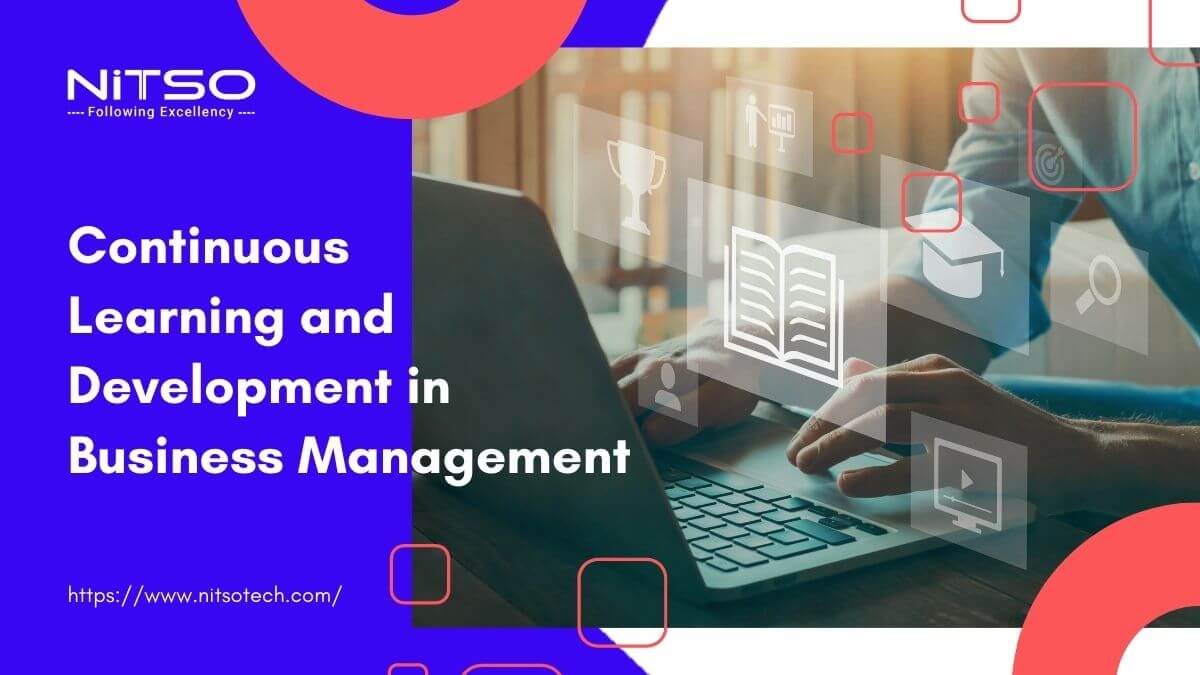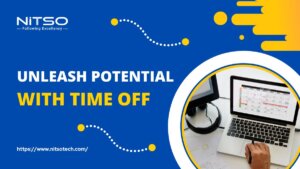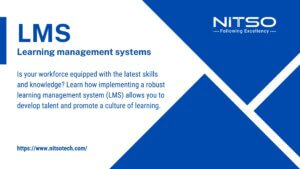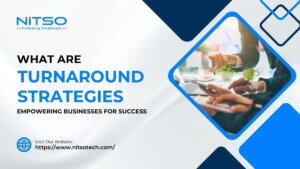Continuous development through ongoing learning has become essential for professionals amidst ever-changing demands of the corporate world. The traditional approach of acquiring knowledge and skills through formal education and training is no longer sufficient to stay competitive. For both professional individuals as well as organizations themselves adaptation, growth, and agility are requirements that must be met consistently over time.
Table of Contents
Introduction
As businesses continually evolve with technological advancements changing at unprecedented rates, it’s more important than ever to explore Continuous Learning & Development within Management. This article brings light to its value by discussing the benefits organizations can expect while considering industries’ unique obstacle-challenges that arise during the integration planning phase. Additionally, we’ll delve into valuable methods aimed at promoting career-long employee education & engagement resulting in long-term retention–all possible through tech advancement.
Let’s begin our exploration by understanding the benefits of continuous learning in business management.
Top 5 Benefits of Continuous Learning
Continuous learning opens doors to various benefits that empower business managers to thrive in their roles. Here are some key advantages:
Enhancing Leadership Skills
Continuous learning provides business managers with opportunities to enhance their leadership skills. By participating in leadership development programs, attending workshops, and acquiring new knowledge, managers can strengthen their ability to motivate teams, make effective decisions, and lead with vision.
Improving Decision-Making Abilities
Business managers often face complex and challenging decisions. Continuous learning equips them with the tools and knowledge necessary to make informed choices. By staying updated with the latest industry trends, market insights, and strategic frameworks, managers can analyze situations more effectively, evaluate potential risks and opportunities, and make decisions that contribute to the overall success of their organizations.
Boosting Adaptability and Resilience
In today’s rapidly evolving business landscape, adaptability and resilience are crucial attributes for business managers. Continuous learning ensures that managers stay agile and responsive to changes in the industry, technology advancements, and shifting customer preferences. By actively seeking new learning opportunities, managers can acquire the skills needed to adapt to new challenges, embrace innovation, and lead their teams through times of change with confidence.
Fostering Innovation and Creativity
Continuous learning nurtures a culture of innovation and creativity within business organizations. When managers engage in ongoing learning, they expose themselves to new ideas, perspectives, and best practices. This exposure can inspire innovative thinking and enable managers to identify novel approaches to problem-solving, product development, and process improvement. By encouraging a culture of continuous learning, organizations can tap into the collective creativity of their managers and drive innovation throughout the company.
Developing a Competitive Edge
Continuous learning is vital for keeping up with today’s business environment defined by constant change. As technology continues to advance rapidly while globalization affects every corner of the industry’s world, organizations that prioritize learning and development have an increased probability of surpassing rival companies. Business managers who strive for personal growth by continually updating themselves with new knowledge and sharpening skills are better equipped at identifying new trends as they emerge, harnessing new technologies far faster than everyone else does, hence taking advantage of rapidly growing opportunities at all times. This adaptability uniquely positions companies to respond effectively to market shifts while improving products or services offered ultimately maintaining an enduring lead over others.
By investing in continuous learning and development, business managers can unlock these benefits and position themselves and their organizations for long-term success. In the following sections, we will explore strategies for developing a learning culture, the role of continuous learning and ineffective leadership, and practical approaches to implementing learning programs within organizations.

How to Develop a Learning Culture in Business Organizations?
To fully harness the benefits of continuous learning, organizations must foster a culture that supports and encourages ongoing development. Here are some key strategies for developing a learning culture within business organizations:
Creating a Supportive Learning Environment
- Leadership Support: Leaders play a crucial role in promoting a learning culture. They should demonstrate their commitment to continuous learning by actively participating in learning initiatives, encouraging their teams to engage in learning activities, and allocating resources for training and development programs.
- Communication: Clear and effective communication is essential in creating a learning culture. Organizations should communicate the value and importance of continuous learning to all employees, highlighting how it contributes to personal growth, career advancement, and organizational success.
- Learning Opportunities: Providing a range of learning options is key when encouraging personal development within a company’s team members. One approach is offering access to relevant workshops or attending sector-specific seminars, webinars and practical hands-on experience on how things work within the industry. Another option involves supporting employees who pursue certification programs aimed at addressing specific organizational needs.
Encouraging Employees to Take Ownership of Their Learning
- Goal Setting: Encourage employees to set learning goals aligned with their career aspirations and the organization’s objectives. These goals should be specific, measurable, achievable, relevant, and time-bound (SMART goals).
- Self-Directed Learning: Support individual advancement among members of your team at the workplace sets them on paths towards professional success whilst enhancing teamwork with respect for everyone’s commitment towards self-development. Such growth calls for accessible learning sources such as mentorship programmes and e-learning platforms available through online libraries.
- Knowledge Sharing: Foster a culture of knowledge sharing, where employees are encouraged to share their expertise, best practices, and lessons learned. Encourage collaborative learning through team discussions, peer-to-peer mentoring, and cross-functional projects.
Incorporating Learning and Development into Performance Evaluations
- Competency-Based Assessments: Integrate learning and development into performance evaluations by assessing employees’ competencies and identifying areas for improvement. This provides employees with feedback on their progress and motivates them to engage in continuous learning.
- Learning Goals as Performance Metrics: Include learning and development goals as part of employees’ performance metrics. This ensures that learning is prioritized and recognized as an essential component of job performance.
- Recognition and Rewards: Recognize and reward employees who actively participate in learning activities, achieve their learning goals, and demonstrate the application of newly acquired knowledge and skills in their roles.
By creating a supportive learning environment, encouraging employees to take ownership of their learning, and incorporating learning and development into performance evaluations, organizations can cultivate a strong learning culture.
How to Implement a Continuous Learning Program?
To effectively implement continuous learning programs within organizations, it is important to follow a systematic approach. Here are key steps to consider:
1. Identifying Organizational Learning Needs
Before designing a continuous learning program, organizations must first identify their specific learning needs. This involves conducting a thorough assessment of the skills, knowledge gaps, and competencies required for employees to excel in their roles. By aligning learning initiatives with organizational goals and individual development plans, businesses can ensure that their programs address the most critical areas for improvement.
2. Designing Effective Learning Programs
Once the learning needs have been identified, organizations can design tailored learning programs. These programs should incorporate a blend of learning methods to accommodate different learning styles and preferences. Consider utilizing a mix of workshops, online courses, mentoring, coaching, and collaborative projects. Additionally, incorporate opportunities for hands-on practice, case studies, and real-life simulations to enhance the practical application of knowledge.
3. Utilizing Various Learning Methods
To cater to different learning preferences and optimize employee engagement, it is important to offer a variety of learning methods. While traditional classroom-style training has its merits, organizations should also leverage technology-enabled learning. This may include utilizing online learning platforms, webinars, podcasts, and virtual classrooms. By providing flexibility and accessibility, organizations can ensure that employees can engage in learning at their own pace and convenience.
4. Encouraging Continuous Learning Culture
Implementing continuous learning requires more than just offering training programs. Organizations should strive to cultivate a learning culture that encourages employees to embrace learning as a lifelong journey. This can be achieved by promoting knowledge sharing, creating communities of practice, and recognizing and rewarding employees who actively engage in continuous learning. By fostering an environment where learning is valued and celebrated, organizations can motivate employees to take ownership of their professional development.
5. Evaluating and Refining Programs
Continuous learning programs should be periodically evaluated to assess their effectiveness and make necessary improvements. Collect feedback from participants, measure learning outcomes, and analyze the impact of the programs on employee performance and organizational goals. This feedback loop allows organizations to refine and enhance their learning initiatives, ensuring that they remain relevant and impactful.

How to Overcome Challenges in Continuous Learning?
Implementing a culture of continuous learning in business organizations is not without its challenges. However, with the right strategies and approaches, these obstacles can be overcome. Here are some common challenges and ways to address them:
Overcoming Resistance to Change
One of the primary challenges in continuous learning is resistance to change. Some employees may be hesitant to embrace new learning initiatives or may perceive them as additional work. To overcome this challenge:
- Communicate the benefits: Clearly communicate the advantages of continuous learning, such as personal growth, career development, and enhanced job performance. Help employees understand how learning can benefit them individually and contribute to the success of the organization.
- Address concerns: Be open to addressing concerns and misconceptions about continuous learning. Create a supportive environment where employees feel comfortable expressing their reservations and provide reassurance and clarity.
Addressing Time Constraints and Competing Priorities
Time constraints and competing priorities can make it challenging for employees to dedicate time to continuous learning. To address this challenge:
- Prioritize learning: Continuous learning is vital for professional development. Promote this among employees by highlighting its significance and the benefits it can have down the line. Remind them that investing in themselves today can pay off greatly tomorrow.
- Provide flexible learning options: Offer flexible learning options, such as self-paced online courses or microlearning modules, that employees can access at their convenience. By providing flexibility, employees can fit learning into their schedules more effectively.
Dealing with Learning Plateaus
Learning plateaus, where individuals feel their progress has stagnated, can be discouraging. To overcome this challenge:
- Offer diverse learning opportunities: Provide a variety of learning resources and opportunities to keep employees engaged and motivated. This can include workshops, webinars, mentoring programs, or cross-functional projects that allow employees to apply their skills in new contexts.
- Encourage continuous feedback: Regularly provide feedback and recognition to employees on their learning journey. Acknowledge their progress, celebrate milestones, and offer support or additional resources when they encounter challenges.
By proactively addressing these challenges, organizations can create an environment that supports and encourages continuous learning.
What is the Impact of Continuous Learning on Employee Engagement and Retention?
Continuous learning plays a vital role in fostering employee engagement and improving retention rates within organizations. When employees have access to ongoing learning opportunities and feel supported in their professional growth, they are more likely to be motivated, satisfied, and committed to their roles. Let’s explore the specific ways in which continuous learning positively impacts employee engagement and employee retention.
Increasing Job Satisfaction and Motivation
Continuous learning demonstrates to employees that their organization values their growth and development. When employees are provided with the resources and support to enhance their skills and knowledge, it enhances their job satisfaction. They feel more engaged and motivated because they perceive their work as meaningful and see opportunities for advancement within the organization. This heightened job satisfaction and motivation contribute to higher levels of employee engagement.
Building a Culture of Professional Development
Organizations that prioritize continuous learning create a culture of professional development. When employees witness their peers and leaders actively participating in learning initiatives, it creates a sense of community and inspires them to engage in their own learning journeys. This culture encourages knowledge-sharing, collaboration, and a growth mindset. Employees feel supported in their pursuit of learning, which fosters a positive work environment and strengthens their commitment to the organization.
Reducing Employee Turnover Rates
Ensuring that employees have access to regular learning programs is an effective strategy for improving retention rates across organizations. When individuals perceive opportunities for skill-building as well as career growth in their roles at current firms, they are more likely to stay rather than seek external opportunities. Additionally, frequent training highlights a company’s commitment toward the constant improvement of its workforce promoting denser relationships between employers and staff thus curbing a high turnover rate along with related expenses linked with recruitment.
Enhancing Employee Skills and Performance
The importance of continuous learning cannot be understated as it contributes significantly to skills and improved job performance among workers. This aspect helps them acquire newfound knowledge that they bring on board while developing personal attributes that lead to better competence levels at work. The raised proficiency results in boosted levels of confidence among employees, providing them with a sense of mastery that pushes their job satisfaction levels up while expanding their professional growth opportunities.
By recognizing the impact of continuous learning on employee engagement and retention, organizations can prioritize and invest in learning programs that empower their employees.
Measuring the Effectiveness of Continuous Learning Programs
Measuring the effectiveness of continuous learning programs is essential to ensure that they are delivering the intended outcomes and providing a return on investment. By establishing clear learning objectives and implementing effective measurement strategies, organizations can gauge the impact of their learning initiatives and make informed decisions for improvement. Here are some key considerations for measuring the effectiveness of continuous learning programs:
Establish Clear Learning Objectives and Metrics
Before implementing any learning program, it is crucial to define clear learning objectives. These objectives should align with the overall business goals and be specific, measurable, achievable, relevant, and time-bound (SMART). For organizations to gauge program success accurately, they should outline objectives and associate relevant measures with them. For example, the measures might encompass elevated workforce proficiency, improved production rates, heightened client satisfaction levels or lower error frequencies.
Gather Feedback and Conduct Evaluations
Acquiring feedback on how well your organization’s continuous learning programs are functioning is critical for their success over time. This gathering process typically involves various procedures ranging from surveys, to discussions within group settings such as focus groups or individual interviews when needed. By focusing on those taking part – understanding their perspective closely – insights regarding organizational strengths & weaknesses could be better identified. Additionally, conducting evaluations, such as pre and post-assessments, can help measure the knowledge and skills gained through the learning program.
Incorporate Continuous Improvement
Continuous improvement is essential for refining and enhancing continuous learning programs. By analyzing feedback, evaluation results, and performance data, organizations can identify areas that require improvement and make necessary adjustments. Regularly reviewing and updating the content, delivery methods, and overall structure of the learning program ensures its relevance and effectiveness in meeting the evolving needs of the learners and the organization.
Leverage Learning Analytics and Technology
Incorporating learning analytics and technology can provide valuable insights into the effectiveness of continuous learning programs. Learning management systems (LMS) and other digital platforms can track learners’ progress, completion rates, and engagement levels. This data can help identify patterns, trends, and areas where learners may require additional support. Leveraging technology can also enable organizations to personalize learning experiences, deliver targeted content, and measure the impact of learning on individual and organizational performance.
By adopting these strategies for measuring the effectiveness of continuous learning programs, organizations can ensure that their investments in learning and development are delivering tangible benefits. Evaluating and refining these programs on an ongoing basis enables organizations to optimize their impact, improve employee performance, and achieve their business objectives.
What is the Future of Continuous Learning in Business Management?
As we look ahead, the future of continuous learning in business management holds great potential for both individuals and organizations. Here are some key aspects to consider:
The Impact of Emerging Technologies on Learning
As technology progresses so does our approach towards acquiring knowledge through the vast future advancement of Artificial Intelligence(AI), machine learning(ML), and data analytics which provides innovative solutions regarding educational platforms taught nowadays. Emerging technologies like adaptive learning systems can assess an individual’s preference or need within seconds using sophisticated algorithms that personalize their studying process accordingly. In addition, virtual reality(VR)and Augmented Reality(AR) present a unique opportunity of having interactive facilities including hands-on expertise leading towards efficient skill development through realistic simulation exposure. The potential for the continued evolution of these technologies undoubtedly holds promise for uplifting future trends from content delivery to assessment strategy leading towards better accessibility, increased engagement, and more effectiveness for learners.
Lifelong Learning is a Necessity for Professionals
In the dynamic and fast-paced business landscape, the concept of lifelong learning is gaining prominence. Continuous learning is no longer limited to acquiring skills for a specific role or stage in one’s career. Professionals are recognizing the need to embrace a mindset of lifelong learning to remain relevant and adaptable in their ever-changing industries. The future will require business managers to take ownership of their learning journey, actively seeking new knowledge, and adapting to evolving demands to navigate their careers successfully.
Anticipating Future Skills and Competencies
As industries undergo digital transformation, new skills and competencies will be in high demand. Business managers will need to anticipate these future skills to stay ahead of the curve. Skills such as data analysis, digital literacy, strategic thinking, and cross-cultural collaboration will become increasingly vital. Continuous learning will play a critical role in equipping business managers with the necessary skills to thrive in the future workplace. By actively engaging in learning opportunities and staying abreast of industry trends, managers can position themselves as valuable assets to their organizations.
In conclusion, the future of continuous learning in business management is marked by technological advancements, the recognition of lifelong learning as a necessity, and the need to anticipate future skills. By embracing these aspects, individuals can proactively adapt to the changing landscape, while organizations can foster a culture of continuous learning to drive innovation, stay competitive, and achieve long-term success.
Summary: The Power of Continuous Learning in Business Management
Throughout this article, we have explored the significance of continuous learning and development in the field of business management. From enhancing leadership skills to fostering innovation, continuous learning offers a multitude of benefits for both individuals and organizations. Let’s recap the key takeaways:
- Continuous learning enhances leadership skills, enabling managers to motivate teams, make effective decisions, and lead with vision.
- It improves decision-making abilities by equipping managers with the necessary knowledge and tools to analyze complex situations, evaluate risks, and identify opportunities.
- Continuous learning boosts adaptability and resilience, enabling managers to navigate change, embrace innovation, and stay agile in a rapidly evolving business landscape.
- It fosters a culture of innovation and creativity, inspiring managers to think outside the box, identify novel approaches, and drive organizational growth.
- Continuous learning provides a competitive edge, allowing organizations to stay ahead of their competitors by adapting to industry trends, leveraging new technologies, and seizing growth opportunities.
As we move forward in an increasingly complex business world, adopting an attitude of endless growth is vital for all decision-makers. Only through ongoing skill development and knowledge acquisition can they efficiently manage hurdles that come along with rapid changes in the market. Thus investing resources into continuous educational opportunities both for themselves as well as employees becomes crucial – be it via workshops or mentorship programs.
Remember, continuous learning is not a one-time event but a lifelong journey. By embracing learning opportunities, staying curious, and seeking new knowledge and skills, business managers can position themselves as invaluable assets in the dynamic world of business management.
Continue to embrace continuous learning, adapt to new challenges, and seize the opportunities that come your way. Together, let’s shape the future of business management through the power of continuous learning.
FAQ: Frequently Asked Questions about Continuous Learning
What is the difference between continuous learning and traditional training programs?
Continuous learning differs from traditional training programs in its approach and scope. While traditional training programs typically focus on specific skills or knowledge acquisition within a limited timeframe, continuous learning is an ongoing process that emphasizes the development of a growth mindset and the pursuit of learning opportunities beyond formal training. Continuous learning encompasses self-directed learning, informal learning through experiences and interactions, and the integration of learning into daily work routines.
How can organizations overcome resistance to continuous learning?
Many people are likely to resist the idea of continuous learning due to various factors such as reluctance towards change, busy schedules or lack of faith in its potential benefits. To overcome resistance, organizations should communicate the importance and benefits of continuous learning, create a supportive learning culture, and provide resources and incentives to encourage participation. Involving employees in the design and implementation of learning programs, offering flexible learning options, and showcasing success stories can also help overcome resistance and foster a positive learning environment.
What are some cost-effective ways to implement continuous learning programs?
Implementing continuous learning programs does not always require a significant financial investment. Organizations can leverage various cost-effective approaches, such as utilizing online learning platforms, offering webinars or virtual training sessions, implementing mentorship or coaching programs, and promoting knowledge sharing within the organization. Additionally, organizations can encourage employees to seek out free or low-cost learning resources, such as open educational resources, industry webinars, and professional networking events.
How can individuals balance continuous learning with their work responsibilities?
Balancing continuous learning with work responsibilities can be challenging, but it is achievable with effective time management and prioritization. Individuals can incorporate learning into their daily routines by setting aside dedicated time for reading industry articles, listening to podcasts during their commute, or participating in online courses during lunch breaks. Additionally, individuals can leverage microlearning techniques, which involve short bursts of learning that can be easily integrated into busy schedules. It is crucial to establish clear learning goals, create a personal learning plan, and regularly evaluate progress to ensure a sustainable balance between learning and work commitments.
How can organizations measure the return on investment (ROI) of continuous learning initiatives?
Measuring the ROI of continuous learning initiatives can be challenging, as its impact may not always be directly quantifiable. However, organizations can consider various evaluation methods, such as pre and post-assessments to measure knowledge gain, surveys to gauge employee satisfaction and engagement, feedback mechanisms to assess behaviour change, and tracking performance metrics to identify improvements in key performance indicators. Qualitative feedback and anecdotal evidence can also provide valuable insights into the impact of continuous learning. It is essential to establish clear learning objectives and metrics upfront and regularly review and analyze data to make informed decisions about the effectiveness of learning initiatives.








0 Comments